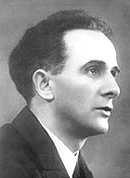The Blessings and Burdens of Revival: George Jeffreys: A Revivalist, a Movement and a Crisis, by Neil Hudson
For British Pentecostals, the desire for revival and the unending search for its first signs are activities that have formed their prayers and shaped their activities during most of their twentieth century existence. Looking back and reconstructing historical events into potential future paradigms of revival, they have lived hoping for God to repeat his activities in Ulster in 1859, Wales in 1904 and the Hebrides in 1948. When these events have felt too distant chronologically, they have turned their attention overseas, Korea, Argentina, Colombia, wherever God seems to be doing more than he is in their own land. The ongoing search has led them to work harder, pray more fervently, support every religious endeavour and yet has ultimately led them to disappointment and, in some cases, disillusionment. However, history suggests that, at least on some occasions, when revival is encountered the consequences are not as glorious as one might have expected.
Sometimes, revival is not as glorious as expected.
This paper will examine the case of George Jeffreys as a revivalist, his development and self-understanding and the result of having a revivalist as a denominational leader. In 1940, George Jeffreys (1889-1962), the founder of the British Elim Pentecostal Churches, resigned after policy decisions he had desired to introduce into the Movement were rejected by the ministers within the denomination. He then instituted a rival denomination. George Jeffreys had been the supreme charismatic leader within Elim for 25 years.
George Jeffreys: His development and evangelistic success

George Jeffreys
George Jeffreys was born in 1889 in Maesteg, Wales and converted, aged 15 years, in November 1904, the year that the Welsh Revival began. His whole life and ministry would reflect the impact made on him by the Welsh Revival.
After supporting his brother, Stephen Jeffreys, in evangelistic campaigns in Swansea, he attracted the attention of Alexander Boddy, who had been at the centre of British Pentecostalism since 1908 and the publication of the magazine, Confidence. In 1913, Boddy went to Wales to visit the two brothers.2 It was during this visit that he invited George to speak at the Sunderland Convention. It was Jeffreys’ task to preach the gospel each evening, after the other main speakers had delivered their addresses. Jeffreys had been catapulted into the midst of leaders who were older and vastly more experienced in ministry. This opportunity to take a major part in the meetings, which was a focal point for Pentecostalism, sealed his future. Firstly, it gave him a platform to attract the attention of Pentecostals who had gathered from all over Europe. Secondly, it placed him amongst the older leaders of the new Pentecostal Movement; it was obvious that his role would become more significant as the older generation continued to age. For Jeffreys, the fact that he, a young man from a poor family in South Wales, had been given the platform to speak to leaders from Europe was seen to be God’s commendation of his life and ministry. Thirdly, it was here that William Gillespie, an Irish Pentecostal, heard him preach and invited him to Ireland. As a result the Elim Evangelistic Band was launched, with the aim of evangelistic meetings being conducted and churches planted.
Category: Church History, Fall 2012, Pneuma Review


